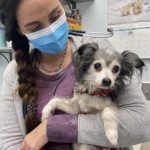Treating & Preventing Hot Spots on Dogs
Have you noticed that your dog is developing small red patches on its skin that cause it to itch, lick and gnaw until open and oozy lesions appear? Your dog is most likely suffering from hot spots. While hot spots are one of the most common skin conditions in dogs, it doesn’t make them any less frustrating (on your end) or uncomfortable (on your dog’s end) to deal with.
This skin condition is triggered by the incessant scratching, licking or chewing of the affected area and results in localized skin inflammation and bacterial infections. With that in mind, it’s important to note that in order to treat your dog’s hotspots, you must find the root cause of the skin irritation that’s causing your dog to itch in the first place.
Common causes of the itching cycle that leads to hot spots
- Parasites
- Food allergies
- Contact irritants
- Stress or boredom
- Matted or dirty coat
- Trapped moisture in coat
- Atopic dermatitis
- Flea allergy dermatitis
Signs & symptoms of hot spots
Incessant scratching, licking and gnawing that leads to the development of:
- Well-defined areas of
- Redness
- Swelling
- Hair loss
- Moist skin areas – discharge pus or fluid
- Crusting and matting of hair surrounding affected area
Treating hot spots
Before beginning to treat your dog’s hot spots, it’s important to consult your veterinarian to plan for the best and most effective course of action. In addition to what your veterinarian recommends based upon your dog’s condition and needs, you can also:
- Clip the hair around the area to prevent matting
- Clean the affected area daily with medicated wipes or gentle antiseptic solutions
- Apply a cone to prevent scratching, licking and gnawing
Preventing hot spots
As mentioned above, the key to preventing hot spots is to identify the root cause of the itching. Once you identify the underlying issue by consulting your veterinarian, you can begin to address it through preventative measures.
Some ways to prevent hot spots, depending on the underlying issue, are:
- Parasite prevention
- Treatment of skin infections
- Allergy management
- Routine grooming
- Daily exercise
- Active play time
- Environmental enrichment
- Supplementing fatty acids (Omega-3)











